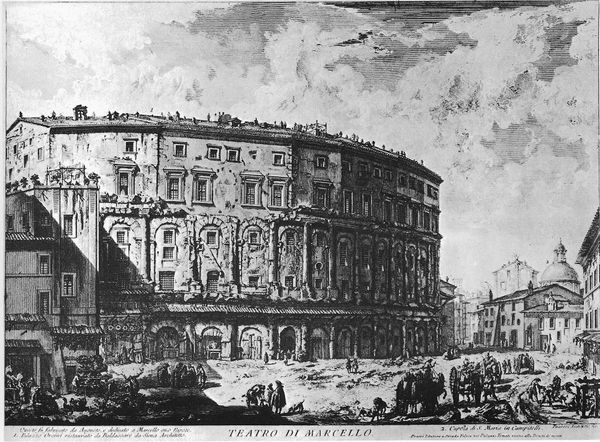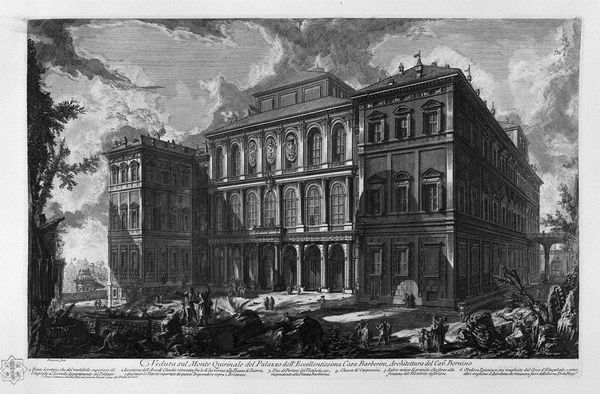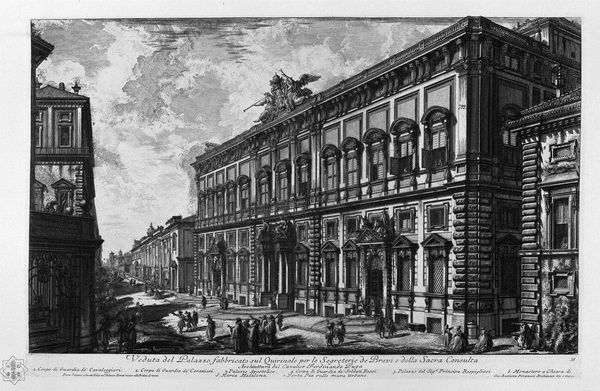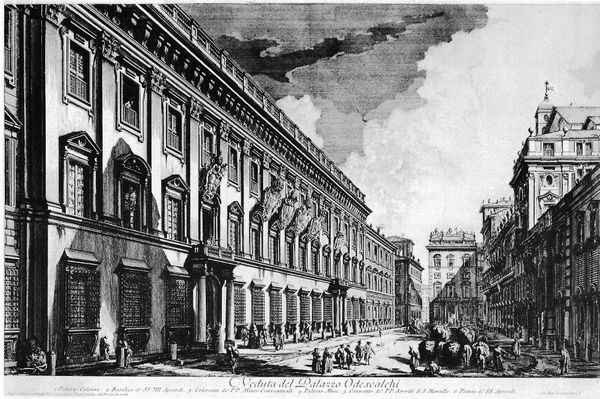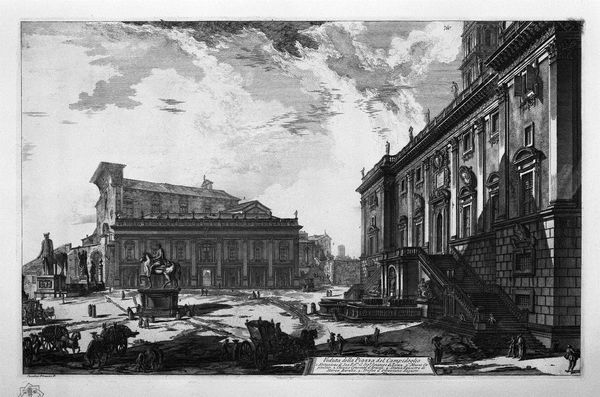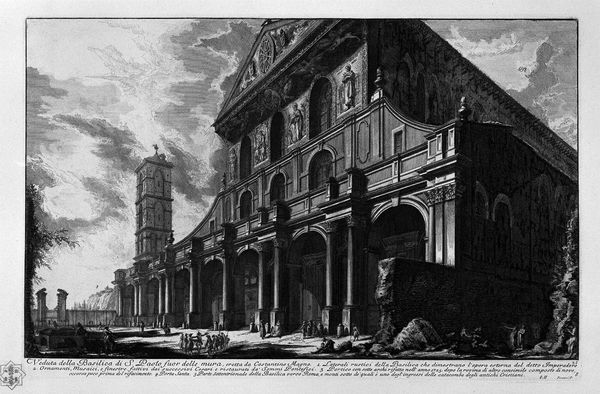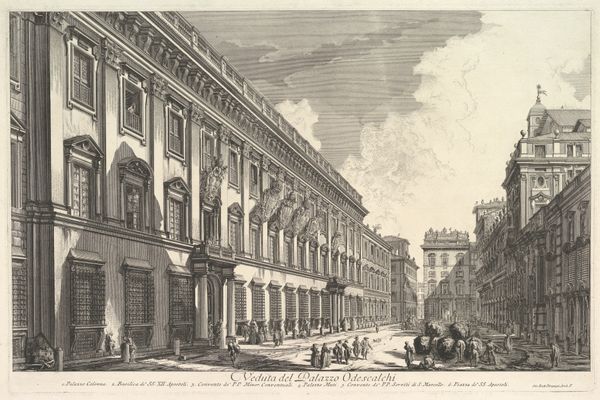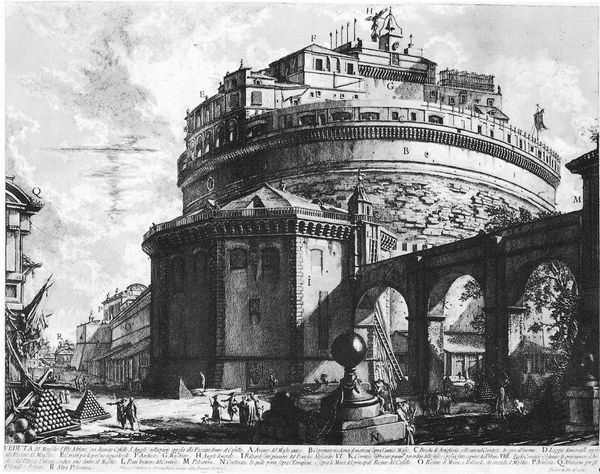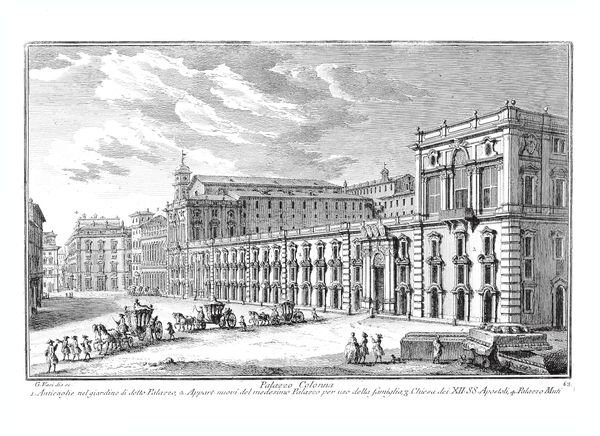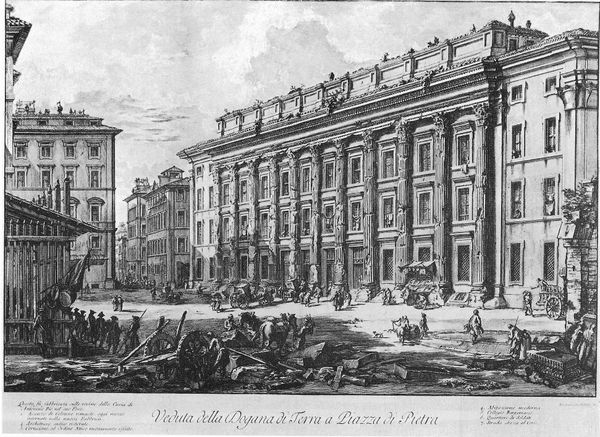
drawing, print, etching, engraving, architecture
#
drawing
# print
#
etching
#
romanesque
#
ancient-mediterranean
#
column
#
black and white
#
carved
#
cityscape
#
tonal art
#
engraving
#
architecture
Copyright: Public domain
Curator: This print by Giovanni Battista Piranesi captures the Theatre of Marcellus, offering a glimpse into the heart of ancient Rome. Editor: My initial reaction is a kind of melancholic grandeur. All that intricate detail rendered in stark monochrome—it feels both monumental and subtly mournful, a ghostly echo of its past glory. Curator: Indeed. Piranesi, through his masterful use of etching and engraving, invites us to consider the layering of history etched into this structure, both physically and metaphorically. You can almost hear the echoes of the past rising from the page. Editor: Absolutely, I read it as more than just an architectural rendering. It’s a study in power, decline, and resilience. This theater, once a symbol of imperial power and entertainment, has clearly undergone dramatic transformation. Notice how Piranesi emphasizes the wear, the crumbling facade, and the marks of time and social re-use on the building, revealing the social complexities embedded in this space. Curator: You're right, the decay is so palpable it's like he’s whispering, “Even empires crumble.” But I also think there's a celebration here of enduring artistry. Look at those meticulously rendered columns! I can almost feel the weight of them! To me, the shadows are more powerful than the form they create. Does that make sense? Editor: It makes total sense. It underscores the duality Piranesi has captured: this intersection between fragility and enduring power. And considering how buildings, even ruins, carry cultural meaning, this image offers insight into how subsequent generations engaged with ancient legacies. Curator: And it really encourages viewers to project their own narratives, their own understandings, into it, too. So are we looking at the past or is it us? What have we made? What are we creating for people centuries from now to ponder over and see us crumble into dust? Deep questions! Editor: Precisely! Piranesi presents us with an art object ripe for dialogue, encouraging us to examine critically how legacies evolve. He turns the Theatre of Marcellus into a symbol of resilience, inviting critical exploration of its role through historical lenses, echoing debates on power, memory, and social transformations, which feels very relevant to our world today.
Comments
No comments
Be the first to comment and join the conversation on the ultimate creative platform.
